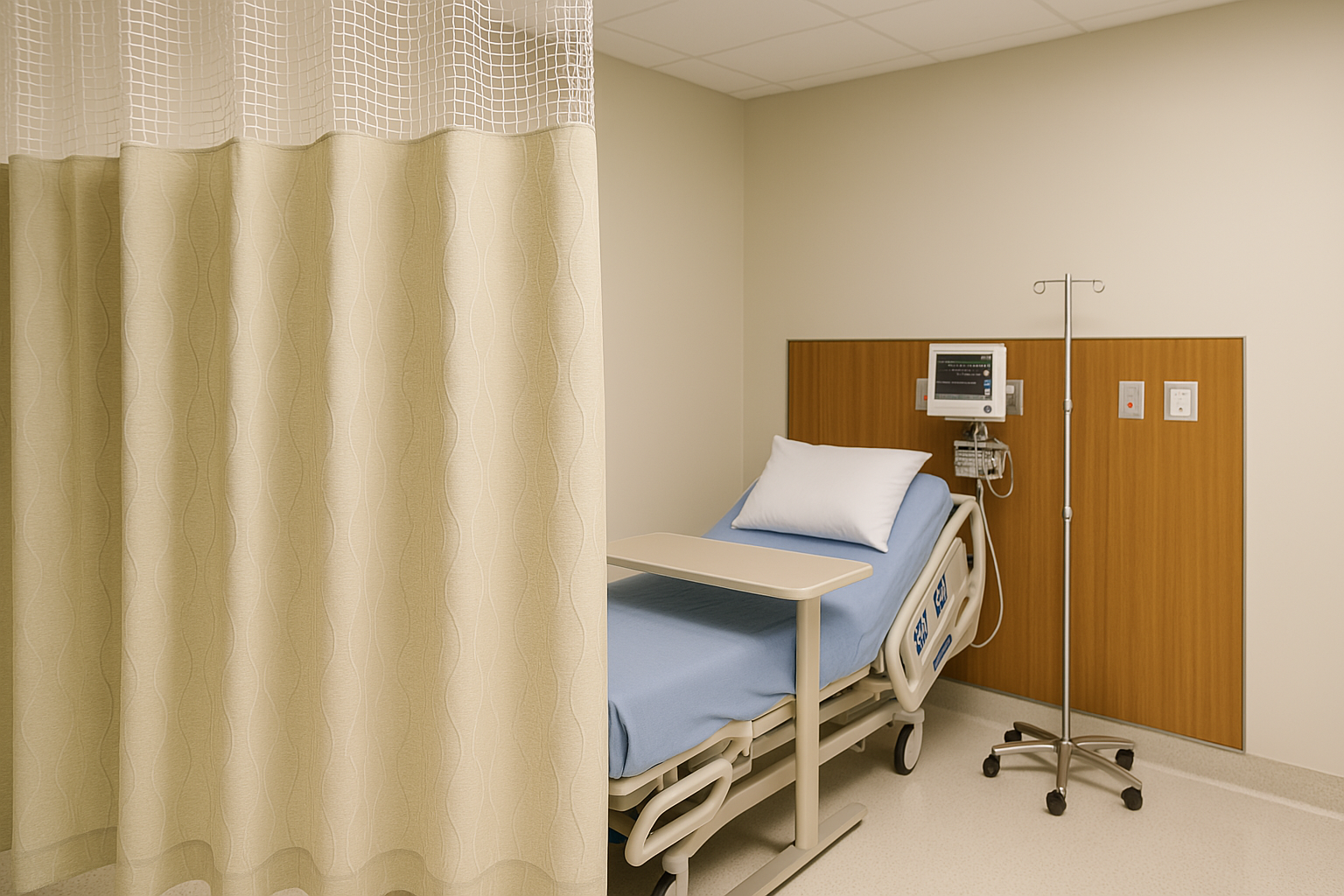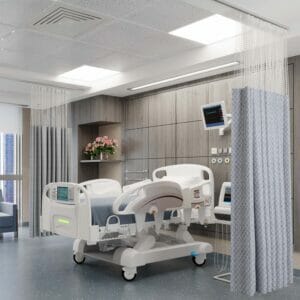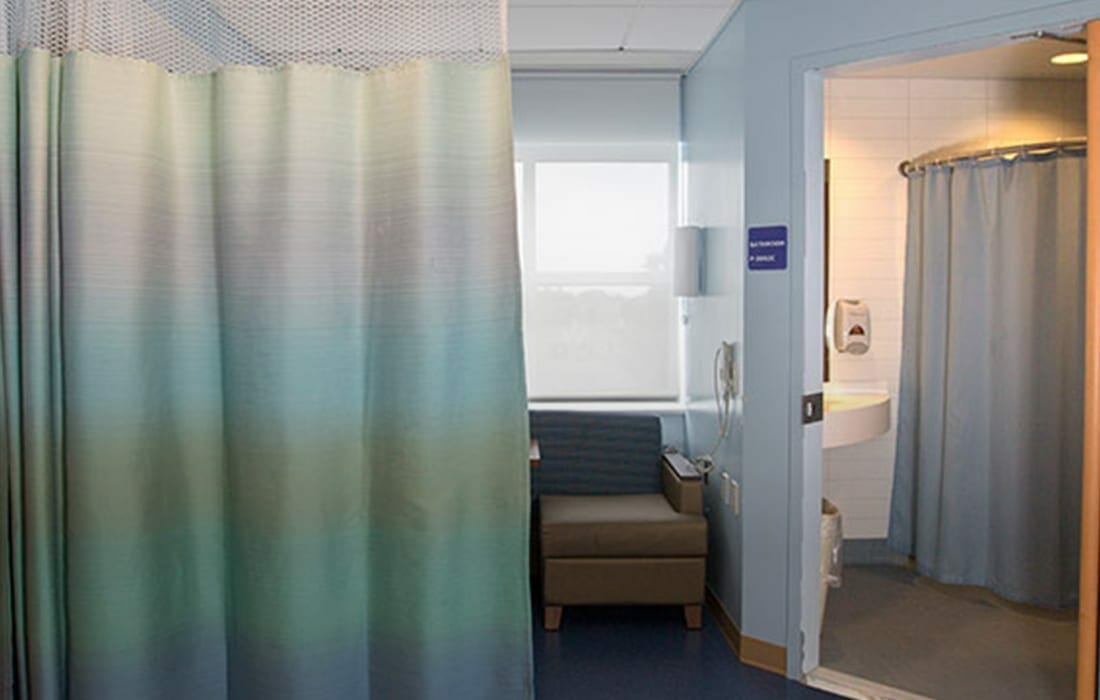When designing or upgrading a healthcare facility, every detail matters—from the layout and lighting to infection control protocols. One of the most essential yet frequently overlooked components of clinical space planning is how to separate patient areas effectively. The choice often comes down to two main options: privacy curtains and traditional room dividers.
Each has its pros and cons, and the right solution depends on a range of factors, including facility size, patient volume, budget, and regulatory needs. In this blog, we’ll explore the key differences between privacy curtains and room dividers, compare their functionality, and help you determine the best fit for your medical or healthcare environment.
Whether you’re running a busy emergency room, outpatient clinic, or long-term care facility, understanding the distinctions between these two options is essential for ensuring privacy, efficiency, and compliance.
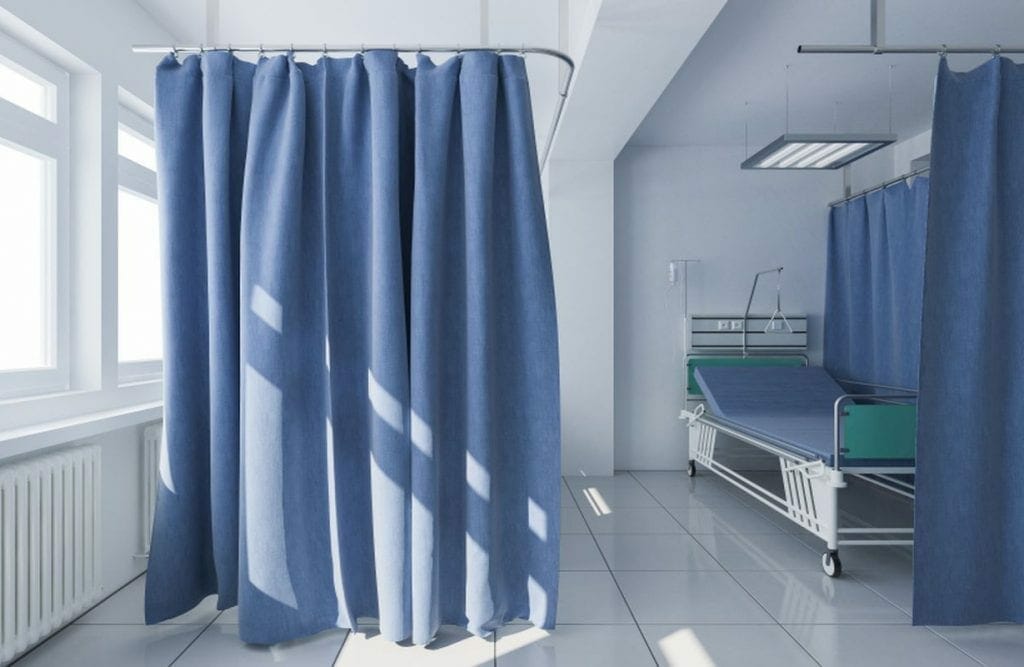
What Are Privacy Curtains?
Privacy curtains, also known as hospital privacy curtains or cubicle curtains, are lightweight, flexible partitions typically mounted on ceiling tracks or portable frames. They are widely used in hospitals, urgent care centers, and other healthcare settings to provide temporary yet effective separation between patient beds or exam areas.
Common features of privacy curtains include:
- Antimicrobial or antibacterial fabric treatment
- Flame-retardant materials
- Easy-to-clean or disposable options
- Ceiling-mounted or portable designs
- Wide range of patterns and colors for aesthetic appeal
Modern privacy curtains, like those offered by HAIGuard™, are designed to meet hygiene, safety, and durability requirements without sacrificing ease of use or patient comfort.
What Are Traditional Room Dividers?
Traditional room dividers are more rigid and permanent than curtains. They can be constructed from various materials, including metal, glass, wood, or composite panels. Some may be movable walls on wheels, while others are fixed partitions that remain in place.
Key characteristics of traditional dividers:
- Sturdier and more durable
- Often used in semi-permanent or long-term settings
- Provide more soundproofing and visual isolation
- Require more space and installation time
- Typically more expensive upfront
These structures may suit environments that demand long-term separation, such as specialty clinics, behavioral health centers, or VIP hospital rooms. However, their inflexibility can be a drawback in high-volume, fast-paced healthcare settings.
1. Flexibility and Adaptability
Privacy Curtains:
Privacy curtains are incredibly adaptable. Their ability to open, close, or remove within seconds makes them ideal for dynamic healthcare environments, where patient flow and room configurations constantly change. Facilities with high turnover or emergency situations benefit from the agility of curtain systems.
Traditional Dividers:
Room dividers offer less flexibility. Moving or repositioning a solid partition takes time, effort, and often specialized labor. They’re not ideal for situations requiring frequent spatial adjustments or for maximizing floor plan efficiency.
✅ Winner: Privacy Curtains
2. Infection Control and Hygiene
In today’s healthcare landscape, infection prevention is a top priority. Curtains and dividers both play roles in minimizing the spread of contaminants, but how they’re maintained makes a difference.
Privacy Curtains:
Many modern hospital curtains are treated with antimicrobial finishes and made with materials designed for frequent laundering or easy replacement. Disposable curtain options are also available for critical environments.
For guidance on how often to replace these barriers, read our full article on best hygiene practices for hospital privacy curtains.
Traditional Dividers:
These dividers can be easier to wipe down on a daily basis, but if not properly sealed or if they contain fabric inserts, they may trap bacteria over time. Cracks and joints in movable walls can also harbor pathogens if not regularly disinfected.
⚖️ Draw: Both options can support hygiene, but curtains offer greater flexibility for maintenance and replacement.
3. Privacy and Sound Control
Traditional Dividers:
When it comes to acoustic privacy, solid dividers usually outperform fabric curtains. They block more noise, which can be beneficial in psychiatric settings or private consultation rooms. Visual privacy is also superior due to the opacity and solidity of the materials.
Privacy Curtains:
While they provide visual separation, standard curtains offer limited sound reduction. However, newer acoustic curtain options help minimize ambient noise, making them a more viable alternative than before.
✅ Winner: Traditional Dividers for acoustic privacy; Curtains still excel in visual separation.
4. Aesthetic and Atmosphere
Privacy Curtains:
Curtains provide a softer, warmer atmosphere that helps reduce the sterile feel of clinical environments. With hundreds of color options, textures, and custom prints available, they allow for branding and personalization of the space.
Traditional Dividers:
While modern partitions can look sleek, they may feel more institutional or rigid. They offer fewer customization options in terms of design and are generally not tailored to enhance patient comfort visually.
✅ Winner: Privacy Curtains — especially in pediatric, maternity, and general care units.
5. Cost and Long-Term Value
Privacy Curtains:
Initial costs are significantly lower. Installation is simple, and replacement parts (like the fabric panels) are inexpensive. Plus, curtains allow facilities to rotate stock for cleaning or seasonal changes without significant investment.
Explore the detailed breakdown in our blog on cost vs. quality when selecting privacy curtains for more insights into how to balance value with performance.
Traditional Dividers:
Upfront expenses for traditional dividers are considerably higher due to material, labor, and installation. Maintenance is relatively minimal, but reconfiguration or relocation can be expensive.
✅ Winner: Privacy Curtains — particularly for facilities looking for scalable, budget-conscious solutions.
6. Space Utilization
Privacy Curtains:
Since curtains are ceiling-mounted or require only a slim track system, they maximize floor space and maneuverability. This is particularly important in crowded clinics or emergency departments.
Traditional Dividers:
These structures take up more floor space, reducing flexibility in tight environments. They may also obstruct equipment mobility or emergency access in some cases.
✅ Winner: Privacy Curtains — for lean and efficient use of space.
7. Installation and Maintenance
Privacy Curtains:
Quick to install and easy to remove. Minimal tools required, and ongoing maintenance is straightforward. Staff can be trained to replace or clean curtains with little disruption.
Traditional Dividers:
Installation is more involved and often permanent or semi-permanent. Maintenance may require contractors or specialized services, depending on the materials used.
✅ Winner: Privacy Curtains — less hassle, more autonomy for staff.
When Should You Choose Privacy Curtains?
Privacy curtains are the superior choice in the following settings:
- Emergency rooms
- Outpatient and ambulatory clinics
- Maternity wards
- Rehabilitation centers
- Pediatrics departments
- Temporary treatment areas
- Facilities seeking flexible, budget-conscious solutions
They are particularly well-suited for high-traffic or frequently reconfigured spaces where patient privacy, hygiene, and aesthetics are a priority.
When Are Traditional Room Dividers a Better Fit?
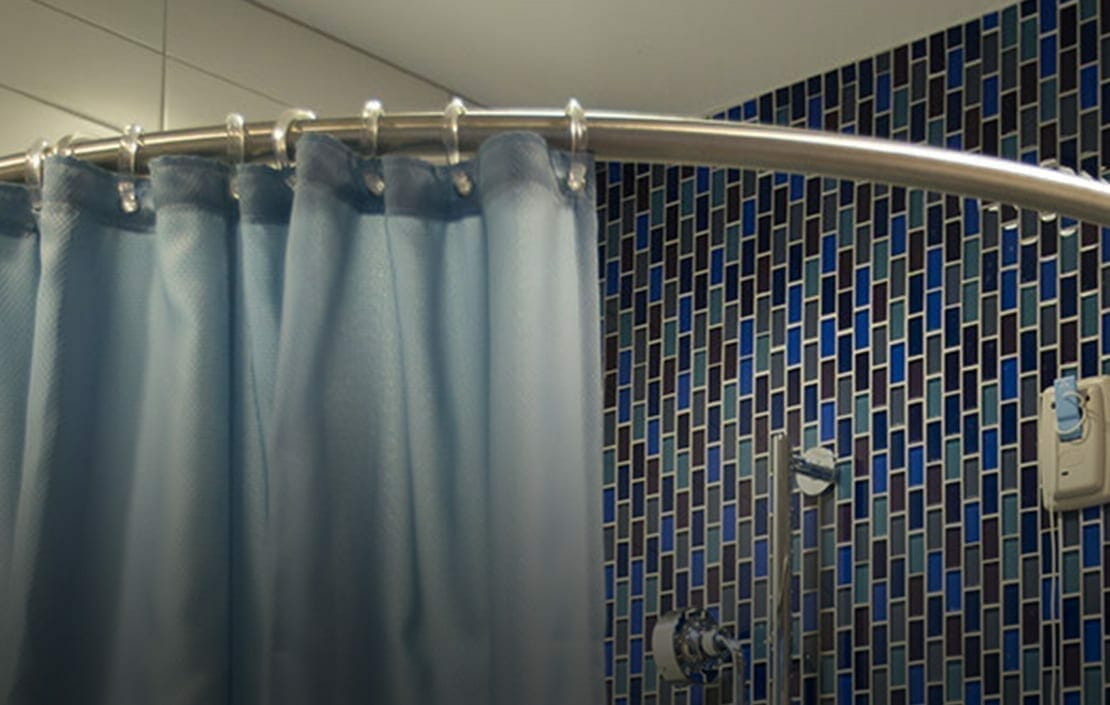
Traditional dividers work best in:
- Behavioral health facilities
- Long-term patient care settings
- VIP or private hospital suites
- Specialty clinics with low patient turnover
- Facilities that prioritize acoustic privacy over layout flexibility
If your facility demands rigid partitions, greater sound isolation, or a more permanent room configuration, these might be the better long-term investment.
Which One Is Right for You?
Both options have their place in healthcare environments, but if you’re looking for affordability, adaptability, and infection control, privacy curtains are the clear winner for most facilities. Their ease of use, aesthetic flexibility, and minimal footprint make them ideal for today’s fast-paced and patient-centered medical settings.
At HAIGuard™, we provide high-performance privacy curtain systems that meet the demanding needs of modern healthcare — without compromising comfort, design, or safety.
Still not sure which route to take? Start by exploring the top 7 benefits of privacy curtains to see why so many hospitals and clinics are moving away from traditional dividers.
Choosing between privacy curtains and traditional room dividers isn’t just a design decision—it’s a strategic move that impacts patient experience, operational efficiency, and overall facility performance.
By understanding the strengths and limitations of each option, you can make informed decisions that align with your facility’s goals and budget.
Let HAIGuard™ help you find the solution that fits your space, supports your staff, and prioritizes your patients.





